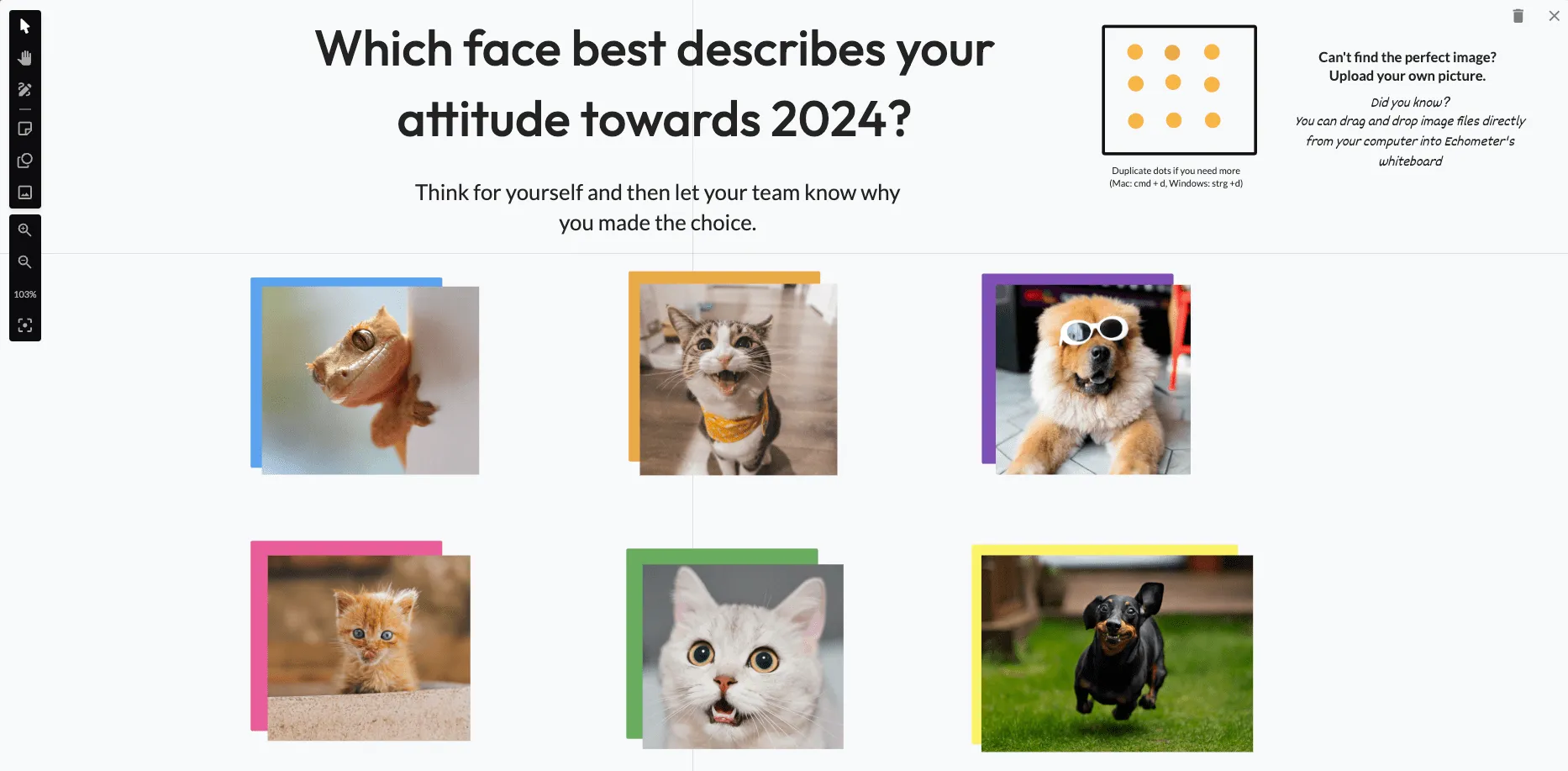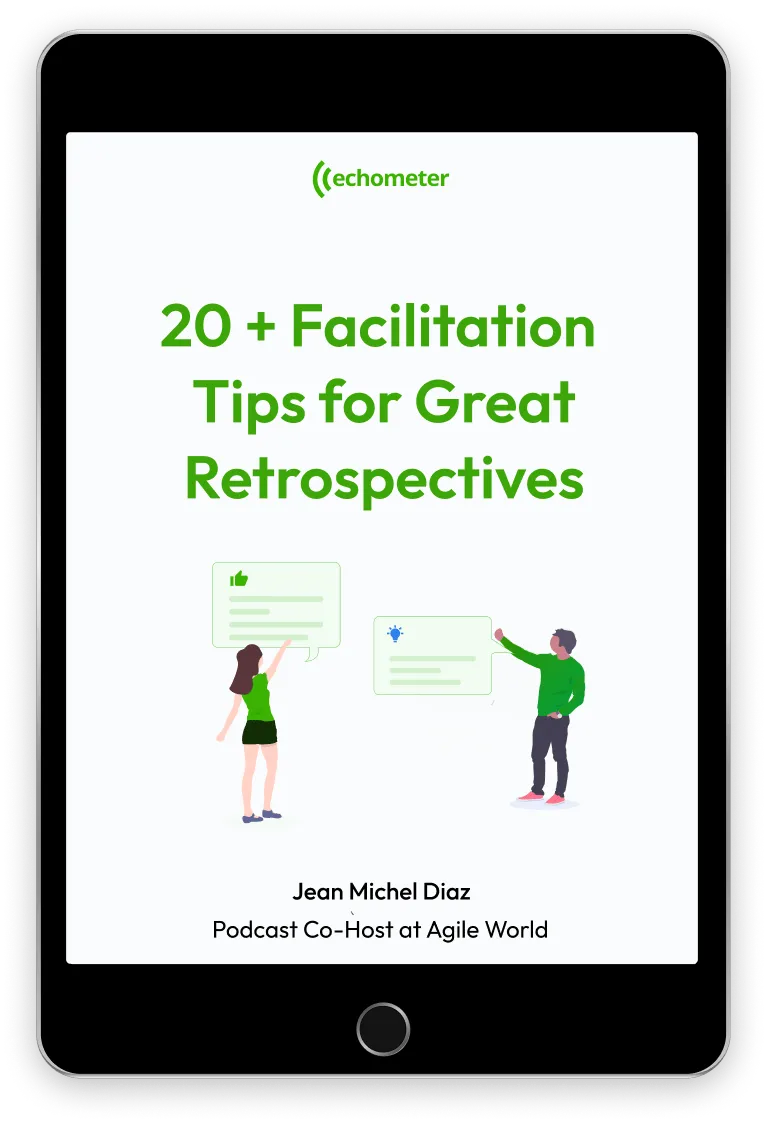

12 Retrospective Ideas for Winter, Christmas and New Year
Especially at the turn of the year, there are good opportunities to adapt the format of the retrospective to the Christmas season and New Year. In this article we share a few ideas on how good metaphors can spark creativity and reflection in the team. Have fun getting inspired!
If you’re looking for retrospective ideas that work throughout the whole year, I warmly recommend to check out our post 32 kickass retrospective ideas for agile teams.
Create the right setting for a year-end and new year retro
In every retrospective, it is important to set the right framework. Usually, retrospectives focus on the “sprint” as a reference period. Around Christmas time, it can be worthwhile to consciously stretch the frame a little further.
By consciously looking at the entire year, more comprehensive, overarching reflections can arise in the team that otherwise tend to get lost in sprint retrospectives.
In the following ideas for your Christmas, year-end or New Year’s retrospective, I always use the entire year as a frame of reference. If you prefer, you can of course simply rewrite the questions so that they refer to a shorter period of time - for example, a quarter, or a sprint.
Retrospective Christmas Ideas now also in video format
Icebreaker Ideas for the agile Christmas Retrospective
The retro should start (according to the 6 phases of every good retrospective) with an icebreaker or a warm-up to get in the right mood for the agile workshop (see our blog post: Every good agile retrospective has these 6 phases ).
Simple, good retrospective icebreaker questions for Christmas in addition to the standard questions can be, for example, the following - you can also adapt them to New Year, of course ( Here you will find 21 Icebreaker classics for every season ):
- Reflection on the last few weeks: If our last agile sprint was Christmas, what was the weather like?
- Reflection of the last few weeks: Imagine our last sprint was the family Christmas gathering. What was the best gift (alternatively: best moment, the biggest mess…)?
- To get to know each other: What is your favorite Christmas tradition (alternatively: New Year’s tradition)?
- To get to know each other: What is your favorite meal at Christmas (alternatively: at New Year)?
- To get to know each other: What was your worst (funniest) Christmas experience (alternatively: New Year’s experience)?
If you want it to be even more visual, you can of course also use a Scrum Retrospective Whiteboard from our Echometer tool for your retro icebreaker. This is an example that might provide an interactive introduction - which face best describes your attitude towards the new year? You can also use the retro icebreaker directly in our tool for free via the button below.
Icebreaker for your New Year's sprint retrospective
Icebreaker 1: Learn about the goals & needs of your colleagues
Duration: 3-10 minutes

Or here’s an icebreaker variation focusing on the reflection of the last sprint:
Icebreaker Board Template for your Christmas Retrospective
Icebreaker 2: Reflection of the last Scrum Sprint
Duration: 3-10 minutes

With these icebreakers you are well equipped to continue successfully on the retro board with the following formats:
Ideas For The Christmas Retrospective
The first two retro ideas are specifically aimed at Christmas as an occasion.
Christmas retrospective format 1
🎄 The Christmas Tree Retrospective
Tannenbaum Retrospective
Christmas retrospective format 2
🎅 St. Nicholas & Servant Rupert Retrospective
Nikolaus & Knecht Ruprecht Retro
Christmas retrospective format 3
⭐️ Christmas Star Retrospective
Weihnachtsstern Retrospective
Ideas For The Year-End Retrospective
Are Christmas retro formats inappropriate in your team? No problem. A year-end retro can also be designed objectively without Santa Claus and a Christmas tree:
Year-end retrospective Format 1
🔙🏔 The Mountaineers Retro (Retrospective)
Mountaineer Retro (Review)
End-of-year retrospective Format 2
🥂The New Year’s Eve retrospective
New Year's Eve Retrospective
Ideas for the New Year retrospective
For the New Year, on the other hand, you can look further ahead in the retrospective. This works, for example, with these retro formats:
New Year's retrospective format 1
🏔🔜 The Mountaineers Retro (Outlook)
Analogous to the retrospective mountain climber retro, this format can also be used wonderfully for the outlook into the new year:
Mountaineer Retro (Outlook)
New Year's retrospective format 2
🎆 The Fireworks Retro
Fireworks Retro
5 ideas for winter retrospectives
All the presents are unwrapped, the bellies are full and the Christmas lights are switched off again. So that the lights don’t go out in your team after the holidays and you don’t fall into hibernation, we have prepared 5 ideas for winter retrospectives for you. You will be able to toboggan easily until February. Hold on tight and let’s go.
Winter Retrospective Format 1
🧣 The winter retro
Winter Retro
Winter Retrospective Format 2
☃️ The Snowman Retro
Snowman Retro ⛄️
Winter Retrospective Format 3
🛷 The sledge retro
Sledging Retro
Winter Retrospective Format 4
❄️ The Snowflakes Retro
Snowflakes Retro
Winter Retrospective Format 5
🐿 The Hibernation Retro
Hibernation Retro
Bonus Tips For Retrospectives
Are Christmas retro formats inappropriate in your team? No problem. A year-end retro can also be designed objectively without Santa Claus and a Christmas tree:
📚 Tips For Moderating Team Retros
Are you still inexperienced with retrospectives or do you not use the format regularly? Then the retrospective at the turn of the year is probably a very good start for you and your team.
If you would like tips for moderating retrospectives, take a look at our eBook for moderation for retrospectives . Here we have compiled all the essential tips for retrospectives in an easily understandable and compact way.

🏅 Practice Makes Perfect
Team retrospectives work best if you make them a regular routine in your team.
We have developed Echometer so that you can easily establish this retro routine for the coming year (without having to invest hours in preparation and follow-up each time).
Echometer offers you:
- Up to 80% time savings in the preparation and follow-up of retrospectives (Ø 90 minutes per retro on 20 minutes) ⌛️
- Guaranteed success through satisfaction surveys to the team after each retro (Ø score of> 8.2 / 10) 👏
- Visualize team development through continuous team health checks 📊
Have a look how Echometer simplifies your team development and makes it measurable and try it out for yourself!
But now I wish you a wonderful and insightful retrospective at the turn of the year!
By the way, if you are still looking for a suitable retro board, our article can help you with the topic: Comparing the 6 best retrospective boards
For managers: 1:1 meeting templates
In addition to a healthy team retrospective, self-reflection at an individual level is also key. Perhaps you have already established regular one-to-one meetings with your team members?
If so, then I highly recommend you try out our free one-on-one tool Echometer. Finally, your team member is engaged in the conversation through our templates - and, by the way, their development becomes measurable in numbers. Feel free to try it out by simply using one of our templates as a basis:
No small talk, no awkward pauses. 🥱 This 1:1 template simply always works.
💬 From the template:
- What achievement are you proud of that I may not have noticed?
- What small change would immediately improve your work?
- What would you like to take more time for at work?
…




















